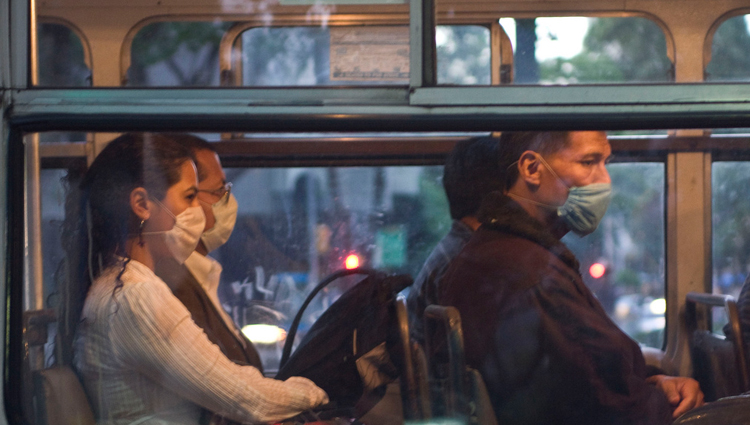The Truth About Masks and Coughs

Editor's Note (Oct. 29, 2020): This story was reported in 2009, during an outbreak of the H1N1 virus and has not been updated for the COVID-19 pandemic. For recent guidelines from the CDC about how masks can slow the spread of COVID-19, please see here.
(Inside Science) -- Last week the World Health Organization officially declared the global outbreak of the new strain of H1N1 influenza a pandemic. The WHO advised that those who are not sick do not have to wear masks. Scientists agree, and here’s why.
On the hands, influenza viruses generally only survive a few minutes -- just long enough to infect a person who picks them up and then touches his eyes, nose, or mouth. This is why one of the most solid pieces of advice in any flu season is to wash one's hands often.
In public areas, where strangers do not normally touch each other, contaminated surfaces are the most likely culprit for infection, said Julian Tang, a clinical virologist in Singapore. For example, if someone coughs into his hands and then holds an escalator handrail, other people holding the same handrail later may unknowingly pick up the virus. If
they then touch their eyes, noses, or mouths, they may become indirectly infected.
This is why during the SARS outbreak in Hong Kong a few years ago, much attention was paid to cleaning exposed surfaces in public areas, like rails and handles on buses and subways, said Tang.
What about masks? Pictures of the SARS outbreak showed throngs of people in Hong Kong wearing breathing masks. But the evidence for protection associated with wearing a mask is not so clear-cut.
Wearing a mask is a very effective way to reduce the amount of saliva someone coughs into a room, which means that if sick people wear masks, everyone else will be better protected.
But for a healthy person wearing a mask, the mask's ability to protect against influenza is unproven.
"The problem with wearing masks," said Julian Tang, a clinical virologist in Singapore, "is that people don't wear them properly." They may provide some protection, but masks that are not airtight will leak around the edges.
On the other hand, Tang adds, wearing a mask may be a reminder that an infection is on the loose. It may help people to remember to wash their hands more frequently.
Oxygen masks in hospitals, though, may actually spread the infection. Studies now show that respiratory assist devices with high flow rates, like oxygen masks and nebulizers (masks designed to aerosolize certain drugs), may boost the spread of infection by venting infectious particles into the room.
One person using a nebulizer in an overcrowded ward may have been the cause of a 2003 SARS outbreak in a Hong Kong hospital. A group of researchers at that same hospital later demonstrated that in the worst case scenario, the side vents of oxygen masks can vent contaminated air up to a foot or more -- and even farther if the person in the ventilator coughs.
The solution, according to the experts, is to place people with contagious respiratory infections like SARS and influenza alone in single isolation rooms designed so that air does not leak out and carry contaminants to other parts of a hospital. The problem is that such rooms are costly to maintain and may be in limited supply -- especially during a pandemic.
The World Health Organization provides the following information on the proper use of masks:
- Cover both your mouth and nose and tie the mask securely to minimize any gaps
- Do not touch the mask while you are wearing it
- Wash your hands after removing the mask
- Replace the mask as soon as it becomes damp
- Discard disposable masks immediately; do not reuse

